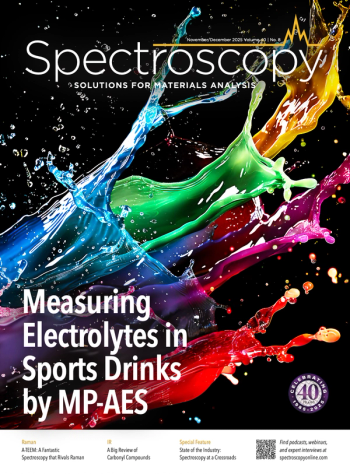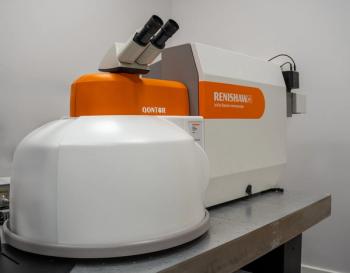
- Advances in Lithium-Ion Battery Analysis for Today's Spectroscopists
- Volume 39
- Issue s11
- Pages: 19–20
Scientists Investigate New Analytical Methods for Upcycling Lithium-Ion Batteries
The team devised a method for recovering high-purity silicon from expired solar panels to produce lithium-ion batteries for electric cars.
The demand for lithium-ion batteries is growing. These batteries, which are used to power personal electronics, electric vehicles, medical equipment, and more, are made from lithium, cobalt, and graphite, which are typically mined in small quantities (1).
Because of the limited quantities available of these materials, scientists are looking for more sustainable methods of manufacture–and a group of researchers from the Energy Research Institute at Nanyang Technological University in Singapore are doing just that (2).
The team, led by Sim Ying, PhD, a research fellow at the Institute, devised a method for recovering high-purity silicon from expired solar panels to produce lithium-ion batteries for electric cars. This type of high-purity silicon is often discarded after 25-30 years, the operational lifespan of a solar panel.
Many traditional methods for separating high purity silicon from solar panels can be costly and use toxic chemicals. Ying and the team are experimenting with a new extraction method that uses phosphoric acid, a substance that is common in the food and beverage industry.
Spectroscopy spoke to Ying about the spectroscopic methods the team used to analyze the elemental content of the purified silicon wafers and why this kind of work is important for sustainability.
The techniques
Ying and the team used a variety of spectroscopy and other methods to monitor and manufacture lithium-ion batteries. The team first soaked the expired solar cell in hot diluted phosphoric acid for 30 minutes to remove aluminum and silver. The process is then repeated using fresh phosphoric acid, which results in a pure silicon wafer. The scientists reported a recovery rate of 98.9% and a purity of 99.2%, which is comparable to other currently available methods.
“The team first manually ground the recovered silicon to fine powder to ensure homogeneity for the subsequent analysis,” Ying told Spectroscopy in an email. “We have then employed X-ray diffraction (XRD) to qualitatively identify the crystalline components present in the recovered silicon. To quantify the amounts of residual metals, X-ray fluorescence (XRF) analysis is performed.”
The researchers also used scanning electron microscopy (SEM) with energy-dispersive X-ray spectroscopy (EDS) to characterize the silicon wafer. This enabled the capture of high-resolution images on the surface morphology and allows the detection of elemental compositions, Ying said.
“The close-up images provide us with information on the effect of the chemical treatment performed on the surface of the wafer,” Ying said. “Additionally, it has enabled us to identify any precipitate deposit on the surface of the recovered silicon.”
The team also used inductively coupled plasma-optical emission spectroscopy (ICP-OES) to quantify the amount of aluminum, silicon, and silver that was dissolved in each of the chemical treatments.
“The technique is selected to provide insights on how the changes in chemical treatment conditions can influence the dissolution efficiency,” Ying said.
Once the battery is assembled, the team used impedance spectroscopy to evaluate the charge transfer resistance between the electrode’s active material, silicon, and the lithium ions at the electrode-electrolyte interface. The upcycled silicon performed similarly to new, commercially bought silicon, the researchers said.
“This method also enables the measurement of electrode ohmic resistance, which comprises the conduction of lithium ions through the electrolyte and electronic conduction through the electrode,” Ying said. “By taking all these measurements, we can gain a more insightful understanding of the battery's performance.”
The benefits of upcycling
Many of the raw materials used in these batteries are mined from geographical regions where trade policies could limit the availability of metals and have an impact on prices (1). As the demand of these batteries grows, upcycling, or creating new products out of waste materials, could provide a viable solution to help keep prices low and production high.
“Silicon-based anodes are being adopted at a rapid pace by the burgeoning electric vehicle (EV) industry,” Ying said. “This escalating demand for silicon-based lithium-ion batteries (LIBs) could potentially result in a supply challenge, given the high purity of silicon that is required. Achieving such high purity necessitates complex purification processes, like the energy-intensive Siemens process, which has a considerable carbon footprint.”
This method also makes it easier to dispose of solar panels and can be more environmentally friendly than traditional methods, Ying added.
“By repurposing silicon from waste sources, we not only alleviate disposal problems but also reduce the carbon footprint associated with solar panels,” Ying said. “This approach provides a sustainable source of silicon for lithium-ion batteries.”
References
1. Mayyas, A.; Steward, D.; Mann, M. The Case for Recycling: Overview and Challenges in the Material Supply Chain for Automotive Li-Ion Batteries. Sustainable Materials and Technologies 2019, 19, DOI:10.1016/j.susmat.2018.e00087.
2. Sim, Y.; Tay, Y. B.; Ankit; Lin, X.; Mathews, N. Simplified Silicon Recovery from Photovoltaic Waste Enables High Performance, Sustainable Lithium-Ion Batteries. Solar Energy Materials and Solar Cells 2023, 257, 112394. DOI:10.1016/j.solmat.2023.112394.
Articles in this issue
Newsletter
Get essential updates on the latest spectroscopy technologies, regulatory standards, and best practices—subscribe today to Spectroscopy.



